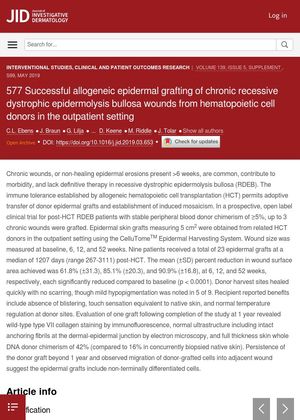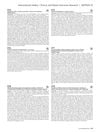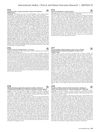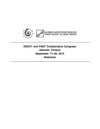Successful Allogeneic Epidermal Grafting of Chronic Recessive Dystrophic Epidermolysis Bullosa Wounds from Hematopoietic Cell Donors in the Outpatient Setting
April 2019
in “
Journal of Investigative Dermatology
”
recessive dystrophic epidermolysis bullosa RDEB epidermal grafts hematopoietic cell donors CelluTome Epidermal Harvesting System chronic wounds wound surface area reduction hypopigmentation blistering touch sensation temperature regulation ultrastructure full thickness skin DNA donor chimerism non-terminally differentiated cells CelluTome

TLDR Skin grafts from related donors significantly healed chronic wounds in patients with a severe skin condition over a year.
In a 2019 clinical trial, nine patients with recessive dystrophic epidermolysis bullosa (RDEB) received a total of 23 epidermal grafts from related hematopoietic cell donors, using the CelluTomeTM Epidermal Harvesting System. The grafts were applied to chronic wounds, which are common in RDEB and often lack definitive therapy. The grafts resulted in significant reductions in wound surface area: 61.8% at 6 weeks, 85.1% at 12 weeks, and 90.9% at 52 weeks, each significantly reduced compared to baseline (p < 0.0001). Donor harvest sites healed quickly with no scarring, though mild hypopigmentation was noted in 5 of 9 patients. Recipients reported benefits such as absence of blistering, touch sensation equivalent to native skin, and normal temperature regulation at donor sites. One graft evaluated after 1 year showed normal ultrastructure and 42% full thickness skin whole DNA donor chimerism. The study suggested that the grafts included non-terminally differentiated cells, as the donor graft persisted beyond 1 year and donor-grafted cells migrated into adjacent wounds.




